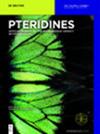Integrative Bioinformatics Analysis of iNOS/NOS2 in gastric and colorectal cancer
IF 0.9
4区 医学
Q4 BIOCHEMISTRY & MOLECULAR BIOLOGY
引用次数: 0
Abstract
Abstract Objective The aim of the present work was to investigate the expression of nitric oxide synthase 2 (iNOS/ NOS2) in colorectal and gastric cancers and evaluate its association with patient’s prognosis by integrated bioinformatics analysis. Methods The data for present study was obtained from the TCGA, GTEx, and STRING database. iNOS/NOS2 mRNA expression in normal tissue and colorectal, and gastric cancer tissuea were investigated through the GTEx and TCGA database. iNOS/NOS2 gene mutations and frequency were analyzed in the TCGA database using the cBioPortal online data analysis tool. The protein-protein interaction (PPI) network of iNOS/NOS2 was constructed by STRING database. Gene ontology (GO) and Kyoto Encyclopedia of Genes and Genomes (KEGG) pathway of iNOS/NOS2 and relevant proteins involved in the PPI network were enriched and demonstrated by the bubble plot. Comparison of the overall survival(OS) and disease free survival(DFS) between samples expressing high and low levels of iNOS/NOS2 was analysis based on the TCGA databases through the GEPIA online data analysis tool. Results For colon adenocarcinoma (COAD) and rectal adenocarcinoma(READ) iNOS/NOS2 mRNA expression levels in tumor tissue were significant higher than those of corresponding normal colorectal tissue (p<0.05). iNOS/NOS2 mutations were identified in both colorectal cancer and gastric cancer. Missense substitutions and synonymous substitution were the top two mutation types for colorectal and gastric cancer. The top positive and negative co-expressed genes correlated with iNOS/ NOS2 were TRIM40 (rpearson=0.56, p<0.05) and GDPD5 (rpearson=-0.41, p<0.05) in colorectal cancer respectively andCASP5 (rpearson=0.63,p<0.05) and PIAS3 (rpearson=-0.43,p<0.05) in gastric cancer. Twenty one proteins were included in the PPI network with 51 nodes and 345 edges which indicated the PPI enrichment wassignificant (p=1.0e-16). The KEGG of the included genes were mainly enriched in metabolic pathway and Jak-STAT signaling pathway. There was a significant difference indisease free survival (DFS) between samples expressing high and low iNOS/NOS2 (HR=0.37, p=0.044) in rectal cancer. The difference was not statistical between iNOS/NOS2 high and low expressing groups for overall survival(OS) or DFS in the colon cancer or gastric cancer(p>0.05). Conclusions iNOS/NOS2 mRNA isup-regulated in tumor tissue compared to corresponding normal tissue in colorectal and gastric cancer which implement it in the development of colorectal and gastric cancers.胃癌和结直肠癌iNOS/NOS2的综合生物信息学分析
摘要目的通过综合生物信息学分析,探讨一氧化氮合酶2 (iNOS/ NOS2)在结直肠癌和胃癌组织中的表达及其与患者预后的关系。方法本研究数据来源于TCGA、GTEx和STRING数据库。通过GTEx和TCGA数据库研究正常组织、结直肠癌和胃癌组织中iNOS/NOS2 mRNA的表达情况。使用cBioPortal在线数据分析工具分析TCGA数据库中iNOS/NOS2基因突变及频率。利用STRING数据库构建了iNOS/NOS2蛋白-蛋白相互作用(PPI)网络。通过气泡图对iNOS/NOS2的基因本体(GO)和京都基因与基因组百科全书(KEGG)通路以及参与PPI网络的相关蛋白进行了富集和展示。基于TCGA数据库,通过GEPIA在线数据分析工具,比较iNOS/NOS2高、低表达样本的总生存期(OS)和无病生存期(DFS)。结果结肠腺癌(COAD)和直肠腺癌(READ)肿瘤组织中iNOS/NOS2 mRNA表达水平显著高于相应正常结直肠组织(p0.05)。结论结、胃癌肿瘤组织中iNOS/NOS2 mRNA表达水平较正常组织上调,参与结、胃癌的发生发展。
本文章由计算机程序翻译,如有差异,请以英文原文为准。
求助全文
约1分钟内获得全文
求助全文
来源期刊

Pteridines
生物-生化与分子生物学
CiteScore
1.20
自引率
25.00%
发文量
6
审稿时长
>12 weeks
期刊介绍:
Pteridines is an open acess international quarterly journal dealing with all aspects of pteridine research. Pteridines are heterocyclic fused ring compounds involved in a wide range of biological functions from the color on butterfly wings to cofactors in enzyme catalysis to essential vitamins. Of the pteridines, 5,6,7,8-tetrahydrobiopterin is the necessary cofactor of several aromatic amino acid monoxygenases, the nitric oxide synthases and glyceryl ether monoxygenase (GEMO). Neopterin plays an essential role in the immune system and is an important biomarker in laboratory medicine for diseases such as HIV, cardiovascular disease, malignant tumors, among others.
Topics:
-Neopterin, dihydroneopterin, monapterin-
Biopterin, tetrahydrobiopterin-
Folates, antifolates, riboflavin-
Phenylalanine, tyrosine, phenylketonuria, serotonin, adrenalin, noradrenalin, L-DOPA, dopamine, related biogenic amines-
Phenylalanine hydroxylase, tyrosine hydroxylase, tryptophan hydroxylase, nitric oxide synthases (iNOS), alkylglycerol monooxygenase (AGMO), dihydropterin reductase, sepiapterin reductase-
Homocysteine, mediators of inflammation, redox systems, iron.
 求助内容:
求助内容: 应助结果提醒方式:
应助结果提醒方式:


